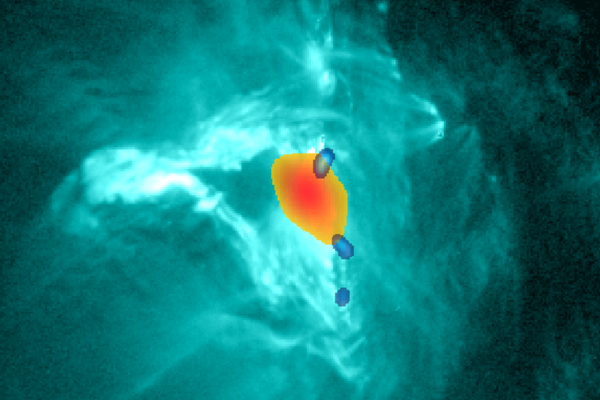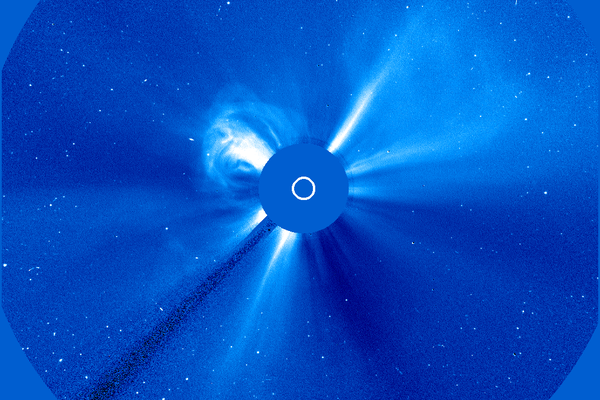Physics of solar eruptive events (flares and coronal mass ejections)

Solar flare in the extreme ultraviolet (SDO/AIA), overlayed with the X-ray emission (RHESSI) of hot plasma (orange) and of energetic electrons (blue).
Credit: AIP
A coronal mass ejection observed in white light by a space-based coronagraph (SOHO/LASCO).
Credit: ESA/NASASolar eruptions are the most energetic explosive events in the solar system. They are powered by energy that is stored in coronal magnetic fields. This energy can be released rapidly, triggered by magnetic reconnection. Subsequently, charged particles are efficiently accelerated to relativistic energies, and plasma is heated to temperatures of up to 50 million Kelvin, causing a small region on the Sun to generate emission over the whole electromagnetic spectrum, from gamma-rays to radio. This phenomenon is called a solar flare. On the other hand, a part of the coronal plasma and its embedded magnetic field can erupt into interplanetary space, forming a coronal mass ejection.
Solar eruptions are at the focus of research for several reasons. They involve plasma processes on scales that are not accessible in terrestrial laboratories. They provide us with a close-up view of magnetic energy release that is also occuring in more remote astrophysical objects. Lastly, they can have a great influence on the Earth and its environment, which is referred to as Space Weather. Some of the main open questions are how eruptions are triggered, how particles are accelerated so efficiently, and how both energy and particles are transported through the solar atmosphere and interplanetary space.
In the wide field of the physics of solar eruptions, the AIP focuses in particular on the following topics:
- Constraining electron acceleration in solar flares using X-ray observations from RHESSI and Solar Orbiter as well as theoretical modeling
- Energy partition in solar eruptive events (thermal vs. nonthermal)
- Coronal shock waves and their role in particle acceleration
- Propagation of electrons through the corona and heliosphere using radio observations (e.g. LOFAR)